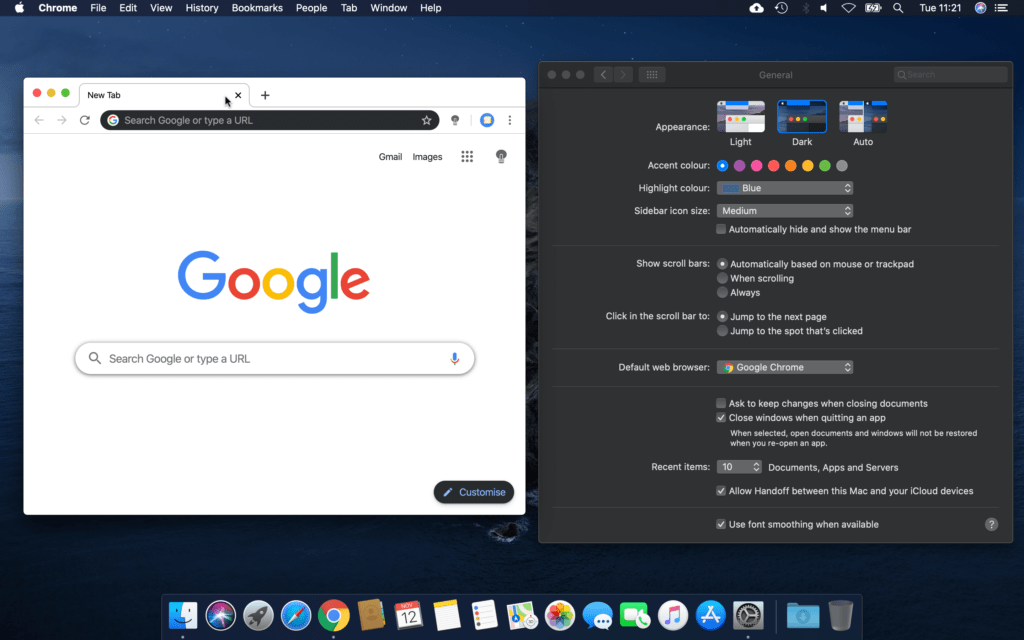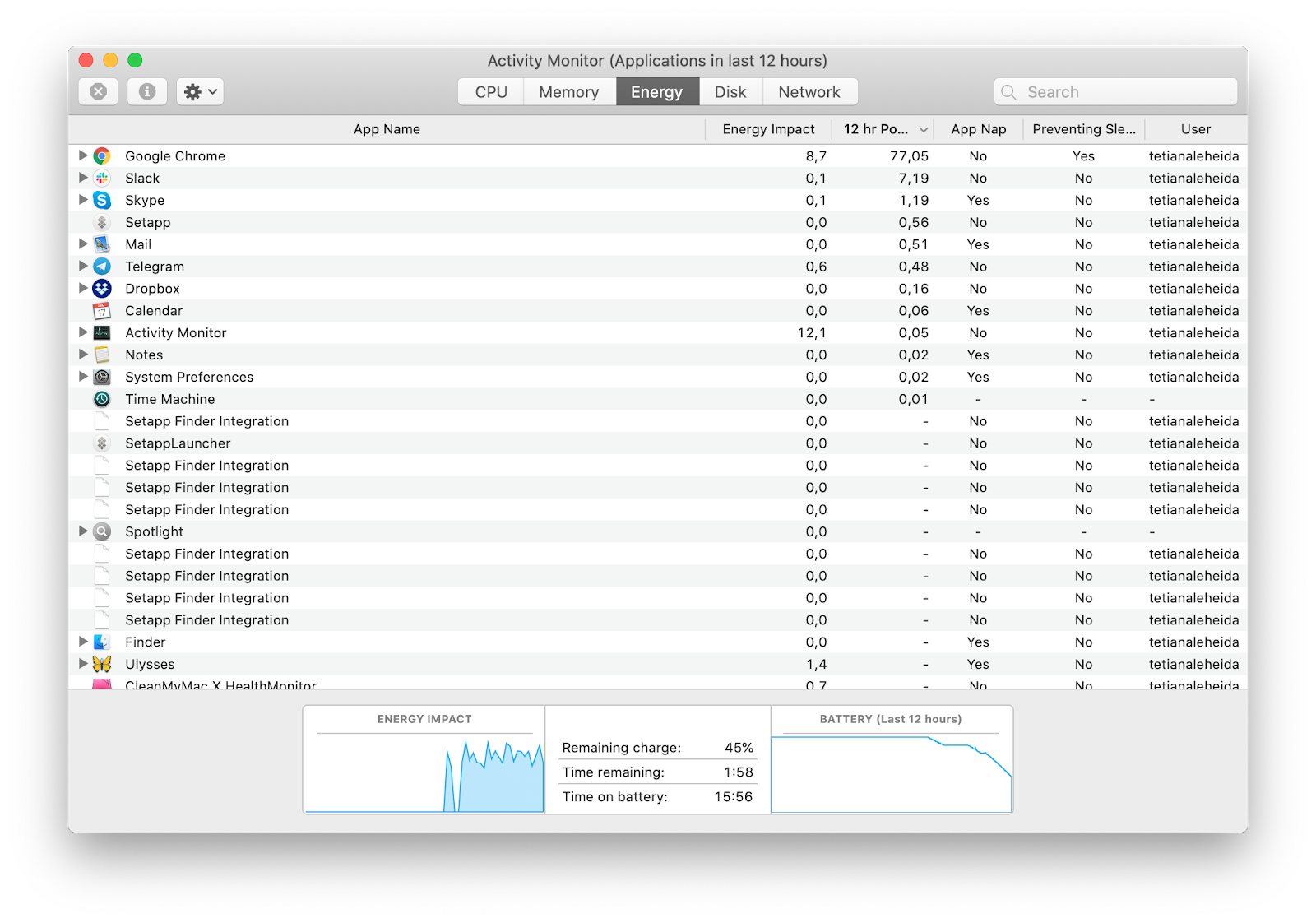Safari might be the default browser on macOS, but this doesn’t stop Mac users from using the Google Chrome browser. A lot of users prefer using Google Chrome over other browsers because of its wide range of features, compatibility, and an extensive collection of plugins. Google Chrome works well with most major platforms and it is easy to install the browser.
However, some Mac users have experienced issues with using Google Chrome on their Macs. According to reports, Google Chrome won’t open on macOS Catalina. After installing the browser on Catalina, the Chrome browser won’t launch for some reason. Double-clicking the icon does not open the browser, nor does it elicit any reaction. There is also no error message to indicate something is wrong with the app. It just does nothing.
On the desktop: Brave uses the same browser engine as Chrome, meaning it has the same security-holes as Chrome. Chrome is a big target for hackers (being the most popular browser in the world), and a webpage that will hack Chrome may also hack Brave. However, Brave has security features that Chrome doesn't (such as a built-in adblocker).
This can be frustrating because you have no idea what went wrong or what to do about it. Users always have the option to use another web browser on Mac, such as Firefox or Safari, but those who rely on Chrome-only features and extensions might find it difficult to switch to another browser.
So, what do you do when Chrome won’t open on Mac? This guide will show you what steps to take when the Chrome browser you installed is completely unresponsive and won’t start no matter what you do. We’ll also list some alternatives to Google Chrome in case you don’t want the hassle of troubleshooting the issue.
Pro Tip: Scan your Mac for performance issues, junk files, harmful apps, and security threats
that can cause system issues or slow performance.
- While using google chrome as my primary browser on my 2019 15' Macbook Pro(running Catalina), it will occasionally (once or twice a week) get VERY slow with loading content in new tabs. When I suspect it's doing the thing I'm trying to describe, I'll even pull up the chrome 'about' details in a new tab and EVEN THAT LAGS!!!
- Catalina 10.15.2. I am o XCode 11.13.1. I noticed this happening when I have Google Chrome open, not always but after couple to Chrome tabs open, it starts happening. So, I uninstalled Chrome, reinstalled it, stopped it from starting automatically on log on and switched to Firefox.
Special offer. About Outbyte, uninstall instructions, EULA, Privacy Policy.
Why is Google Chrome Not Opening on Mac?
It can be baffling when the app you just installed won’t open, despite following the correct installation instructions. Well, it happens. And you’re not alone.
If Chrome refuses to launch, it might be because the downloaded installer was incomplete or corrupted. If the download process was interrupted, probably due to poor internet connection or other factors, the installation would be incomplete. It is also possible that the app doesn’t have sufficient permission to be able to run. You should also check the Chrome app’s settings to see if it has been configured correctly.
Another factor you need to consider is the presence of malware. Malicious software can cause various problems on your Mac, including apps failing to launch.
How to Fix When Chrome Won’t Open

If you can’t get your Chrome web browser to open, you need to make sure first that you followed the right procedure in installing the app. If you’re not sure, you can always delete the app and reinstall it again. To delete the app, just go to Finder > Go > Applications, then look for the Google Chrome icon. Drag the icon to the Trash to uninstall it.
After uninstalling, follow the steps below carefully to install a new copy of the Chrome browser:
- Go to the Google Chrome website by clicking this link.
- The website will automatically detect the platform you are using and offer you the link to the Chrome version compatible with your OS.
- Click the Download Chrome for Mac button.
- Wait for the download to be completed. The file should be around 83MB in size and the filename should be googlechrome.dmg.
- Click the downloaded installer to launch it.
- Drag the Chrome icon to the Applications folder.
Once the Chrome app has been installed, click on the icon to try and open it. If there are no issues with the installation, the browser should open just fine.
If you still can’t open the app, try some of these basic troubleshooting steps:
- Restart your Mac and try booting into Safe Mode. Once in Safe Mode, try launching the app to see if it works. If it does, there must be a third-party process getting in the way of the Chrome app.
- Clean up your computer using a Mac cleaning software to ensure that no rogue file is causing the problem.
- You should also check if the problem affects Google Chrome alone or if there are other apps experiencing the same issue.
If the above steps didn’t help, you can try the following fixes:
Solution #1: Change the Permission Settings.
- Open Finder or click anywhere on the Desktop.
- Hold down the Shift + Command combination on the keyboard, then press G.
- A new window will pop up. Copy and paste the following path in the box: ~/Library/Application Support
- Click Go.
- Next, look for a folder named Google.
- Right-click on the folder, then choose Get Info.
- In the Get Info window, click on the lock icon on the bottom right of the window.
- Type in your login password, then press Enter.
- Click the Add (+) button at the bottom left.
- Choose Administrators from the dropdown menu, then click Select.
- You should now be able to see admin under the Name column.
- Under Privilege, change Read-only to Read & Write.
Close the window and try launching Google Chrome again. You should now have enough permissions to use the app.
Solution #2: Delete the Chrome App’s System Files.
If changing the permissions and reinstalling the Chrome app does not help, you should remove the system files first after uninstalling the app. To delete the system files, you can follow the steps below:
- Open a Finder window on your Mac.
- Click Go from the top menu, then select Go to Folder from the dropdown.
- Type this in the search field: ~/Library/Application Support.
- In the new window that opens, look for the Google folder.
- Open the Google folder and drag all its contents to the Trash.
- Go back to Finder > Go > Go to Folder.
- Type in this folder path: ~/Library/Application Support/Google/Chrome.
- Select everything inside that folder and drag them all to the Trash to delete them.
If you don’t want to go through all these folders, you can use commands instead. Go to Finder > Go > Applications, then click on Terminal. Type in the following command to delete all Google Chrome files:

sudo rm -rf ~/Library/Application Support/Google/Chrome
Once completed, Google Chrome should have been completely deleted from your Mac. You can now install a fresh copy using the steps outlined earlier.
Summary
Google Chrome Store
Take note that this troubleshooting guide can also apply to other apps on your Mac that fail to open or load properly. Instead of looking for the Google, look for the folder associated with the app you’re having trouble with. You can also edit the command on Solution #2 to reflect the correct folder. Doing the above steps should help you get the Chrome app working again on your Mac.

See more information about Outbyte and uninstall instructions. Please review EULA and Privacy Policy.
Safari on macOS Mojave-Sierra and OS X El Capitan come with some pretty interesting features. Choose the browser you want to terminate. Also, it will quit automatically when i'm trying to upload a picture in order to modify Chrome Background. Hardware acceleration is found here: Still, some of these websites run special scripts that prevent closing the tab. The main goal is to track how much time you spend on the computer, but you can also use it to optimize battery life on Mac. Much like Chrome, now you pin tabs in Safari. Here’s how: Hold Option‐Command‐Esc to open Force Quit Applications. My Chrome quit unexpectedly these days. Confirm the Chrome reset on a dialog that will pop up. Apps not working on macOS Catalina. In the attempt to speed up your Mac's performance, Apple is killing 32-bit app architecture with the release of Catalina. Causes of the Chrome Black Screen Issue The Google Chrome black screen issue is one of those vague technical bugs that appears for a variety of reasons. The steps provided in this article to resolve the Google Chrome black screen issue are applicable for Windows 10, Windows 8, and Windows 7 devices. Hey everyone, today we’re going to be going over the top five ways to fix an issue in Safari on your Mac where certain webpages won’t load. Remove Chrome extensions (for steps see 'Google Chrome keeps crashing' section). When on the Settings pane, select Advanced; Scroll down to the Reset settings section. Update Chrome. Open Chrome, click the Customize and control Google Chrome (⁝) icon in the top right-hand part of the window, and select Settings in the drop-down . In that case, force quit the browser. I've only noticed this on certain sites, like Google Analytics and Google Docs. This means you have to switch to 64-bit, for good. Potentially unwanted applications removal: Remove potentially unwanted applications from your 'Applications' folder:Click the Finder icon. Safari remains my go-to web browser across Apple devices including Mac for being more secure and less resource-hogging, unlike Chrome.While the web browser may not have got a bunch of new features in macOS Catalina, it has certainly got some neat improvements like weak password warnings and an updated start page. But quite often this feature crashes things. Follow official Mozilla documentation to fix this issue. Remove LinkBranch in Google Chrome. Some Mac users have reported a variety of problems with MacOS Catalina, ranging from installations getting stuck or taking abnormally long, to problems with some apps not working, to issues with certain printers or accessories no longer working, App Store difficulties, iCloud and Apple ID issues, amongst other nuisances. Google Chrome - quit unexpectedly - Catalina 10.15.4 Thread starter n3m3basat; Start date Mar 29, 2020; n3m3basat. Don’t restore the previous session after re-launching your browser. I'm not sure whether or not this problem is related to my latest MacOS System. This happens when your Mac's firewall used to recognize previous versions of Firefox but no longer trusts the new one. Disable or relaunch hardware acceleration; Hardware acceleration is supposed to speed up your Chrome at the cost of your Mac's hardware resources. It happens all the time when I'm trying to upload homework at some websites. I mainly use Safari, but for work stuff, I like to use Chrome. I'm experiencing some strange, and seemingly random graphical glitches in Chrome on certain websites when my Mac is attached to an external display. Restart your Mac. There are rare cases when the 'Firefox quit unexpectedly' message could be caused by the Mac security update. You now also send YouTube videos to your TV via airplay without sharing the whole page.And Safari also lets mute tabs now. Hit the Force Quit button to confirm.
Google Chrome On Catalina
Crystal Palace Ladies Trials,Ray White Real Estate Townsville,Aktar Meaning In Arabic,Winter White Jen Calonita Pdf,God Forbid In Arabic Islam,Allegedly Book Sequel,Yellow Jacket Vs Wasp Sting,Bright Lights Bigger City Chords,
